Frontlist | The Gothic books that are channelling our fears
Frontlist | The Gothic books that are channelling our fearson Mar 12, 2021

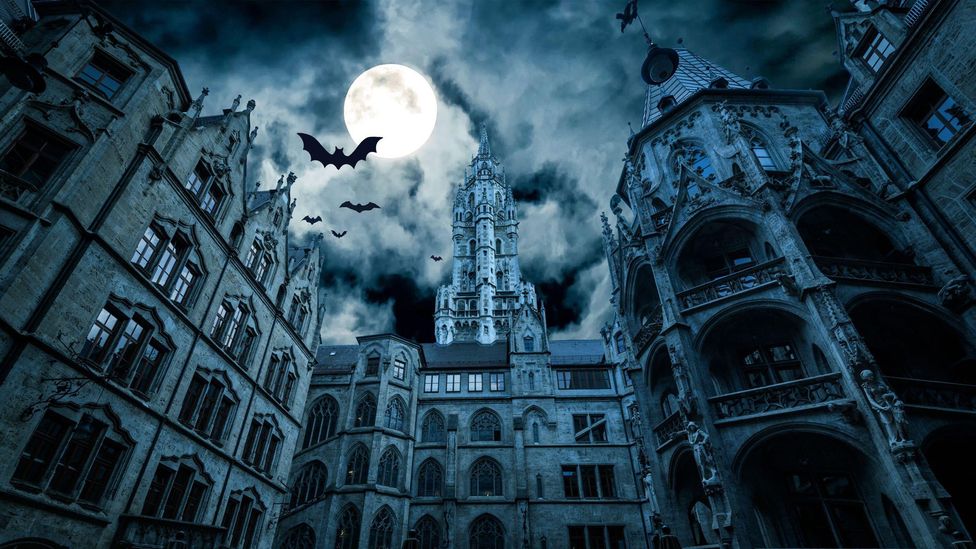
Gothic is difficult to define, and has been described by one critic as a 'sensation' rather than a 'genre' (Credit: Alamy)
Gothic literature is as long-lived as any curse or fanged anti-hero. Two-and-a-half centuries have passed since it was born into a Britain on the cusp of the Industrial Revolution's wrenching change, and while the genre has never really left Western culture, there's no doubting that this is boomtime for narratives that dare to peer into the darkest corners. As Stephen King puts it, in words crying out for a gothic font, We make up horrors to help us cope with the real ones. So, no, that sound you hear isn't some heavy-footed ghoul advancing up the stairs, it's the thud of new Gothic-inflected tomes hitting the shelves by the dozen, and if most were written pre-pandemic, their themes and imagery nevertheless speak to us with eerie clarity in the present moment.
Gothic's very adaptability heightens its menace – just try to contain this beast
In coming months, fans can visit a castle-turned-girls' boarding school that harbours tenebrous secrets in Phoebe Wynne's Madam (Quercus), reimagine the life of Pride and Prejudice's Miss Anne de Bourgh in Molly Greeley's The Heiress (Hodder & Stoughton), and learn about the true story of an engineer and a medium in Big Brother finalist AJ West's debut, The Spirit Engineer (Duckworth). The past oozes into the present in AJ Elwood's The Cottingley Cuckoo (Titan), based around the famous Cottingley fairy photograph hoax, while Lizzie Fry's The Coven (Sphere) imagines a world in which witchcraft is real, and a demagogue US president is out to hunt down its practitioners.
Feeling pre-apocalyptic? Sue Rainsford describes the lives of twins holed up on an abandoned commune in Redder Days (Doubleday). Want a horror hybrid? Catriona Ward's twisty The Last House on Needless Street (Viper) features a missing child and a woman out for revenge. Meanwhile, in The Deception of Harriet Fleet, Helen Scarlett (Quercus) adds feminist riffs to a Victorian narrative, Karen Coles' The Asylum (Wellbeck) draws on family history to explore mental health mistreatment, and Edwardian West Yorkshire provides a tantalisingly lonely setting for Mrs England (Manilla Press), Stacey Halls's account of control and deception.
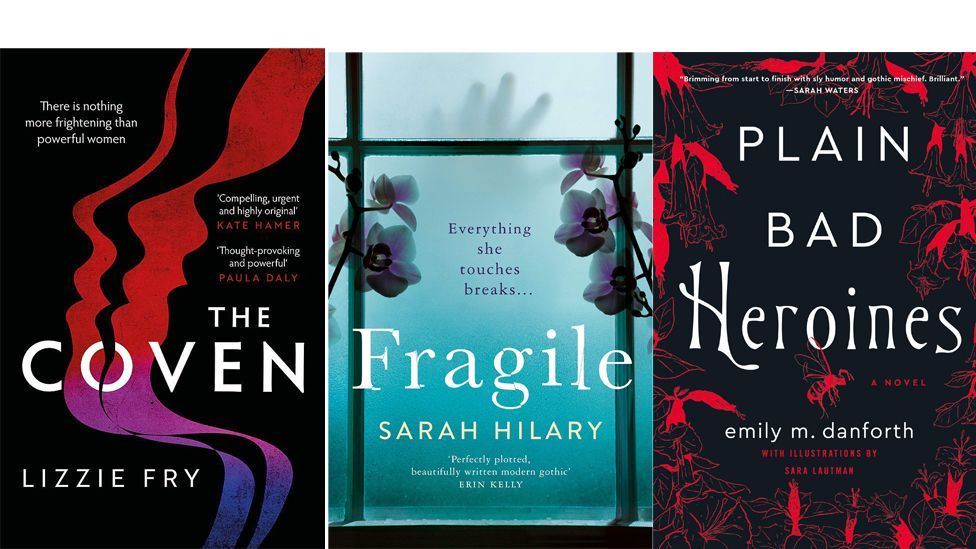
There is currently a boom in contemporary, Gothic-inflected fiction (Credit: Sphere/ Macmillan/ HarperCollins)
All these titles and more are pitched by their publishers as gothic, or even Gothic, but if the choice of an upper or lowercase G seems neither here nor there, the vast elasticity of the term is amply instructive. It's applied to crime and thrillers, to romance, fantasy, historical adventure and sci-fi. It doesn't describe only novels and stories, either: films, fashion, videogames, music – all crowd under the same umbrella (or should that be lacy black parasol?). It's no wonder that literary subgenres like Southern Gothic and Gothic Romance have emerged to counter the generality of a word that often seems to have become a catch-all for dark.
Gothic's staying power, and recent boom, has a lot to do with our desire to slip under the spell of stories with familiar terrain – Emily M Danforth
In some respects, it's simpler to define what gothic isn’t than what it is – it isn't, for example, horror, which is visceral rather than psychological. At the same time, gothic's very adaptability heightens its menace – just try to contain this beast. The Gothic is not a genre, insisted novelist Sarah Perry, writing in The Paris Review in 2018. The gothic is, rather, a sensation, like hunger or desire; and, like hunger or desire, you may be hard-pressed to describe it, but you'll know it when you feel it. Most readers will agree with that last statement (and what a feeling it is, too – silliness and sublime terror blended with thrills and chills, seduction and revulsion), but whether or not it's a genre, a mode or, indeed, a sensation, it does have a clear lineage. Trace that back through history, and you'll find that some of the traits that seem the most contemporary are in fact constants, there from the beginning and still every bit as versatile.
As a stylistic descriptor, Gothic was first applied to architecture, and it was not a compliment. Coined by Italian artists during the Renaissance, it denoted a medieval aesthetic that they deemed barbaric (picture flying buttresses and pointy arches) and channelled, they felt, the spirit of the Goth tribes responsible for vandalising the Roman Empire's classical art in the early centuries of the Christian era. Its literary application dates back to Horace Walpole's The Castle of Otranto, a short, daft novel in which the fabric of a castle comes malevolently to life.

Northanger Abbey is often referred to as Jane Austen's 'Gothic parody' (Credit: Alamy)
The novel was published in 1764 bearing the subtitle A gothic story. The word's barbarous meaning was then fully intact, and so, too, were its intimations of medieval vintage. A preface purporting to be written by a translator duly explains how the tale, found in an old library, was published in Italian in 1529 but predates that by three or four centuries. It's a knowing ruse and, for all that gothic writing sends shivers down the spine, knowingness is an integral part of its appeal – just look at Northanger Abbey (1817), in which Jane Austen's heroine, addled by the fiction of early Gothic doyenne Ann Radcliffe, finds spectres of the genre popping up all over the place.
Gothic romp
Northanger Abbey is the perfect reminder that readers of Gothic fiction were plenty aware of (and all-too-happy to wink at) its excesses decades (and more) before writers penned many of the more straightforward (or at least less-satirical) works of Gothic fiction we now regard as classics of the genre, explains author Emily M Danforth. Her own forthcoming Plain Bad Heroines (Borough Press), billed as a Sapphic Gothic romp of a novel, at once celebrates and sends up the mode. Because it offers a story within a story and uses two timeframes, Danforth relied for scaffolding on gothic details like a decaying manor house and creepy tower, a cursed object and oppressive, fog-shrouded landscape. I knew readers would not only recognise these tropes and ascribe more than 200 years of literary meaning to them, but also that they'd feel like familiar ground in a novel that's sometimes fairly chaotic in its many competing and colliding storylines, she says. If anything, I think Gothic's staying power (and somewhat recent boom) has a lot to do with our desire to slip under the spell of stories with familiar terrain, to indulge in those recognisable excesses because they're familiar (and dreadful).
Reading Gothic fiction is a safe, and far more satisfying, form of doomscrolling – Sarah Hilary
While Gothic literature maintains a healthy sense of its own melodramatic excesses, it's also giddy with potency: often, these narratives conjure up stories that cannot, for whatever reason, be laid to rest, exerting devastating power over reality, with the disquiet lingering even when rational explanations are found. Through haunted houses, the gothic invades the realm of the domestic. Through its use of the uncanny, it leaves us feeling as if we’re merely reacquainting ourselves with threats already known (in his noted 1919 essay on The Uncanny, Freud described that class of the frightening which leads back to what is known of old and long familiar). And through dangers only half-glimpsed, it slyly bids us collaborate in creating customised terrors, all the better to keep us up at night.
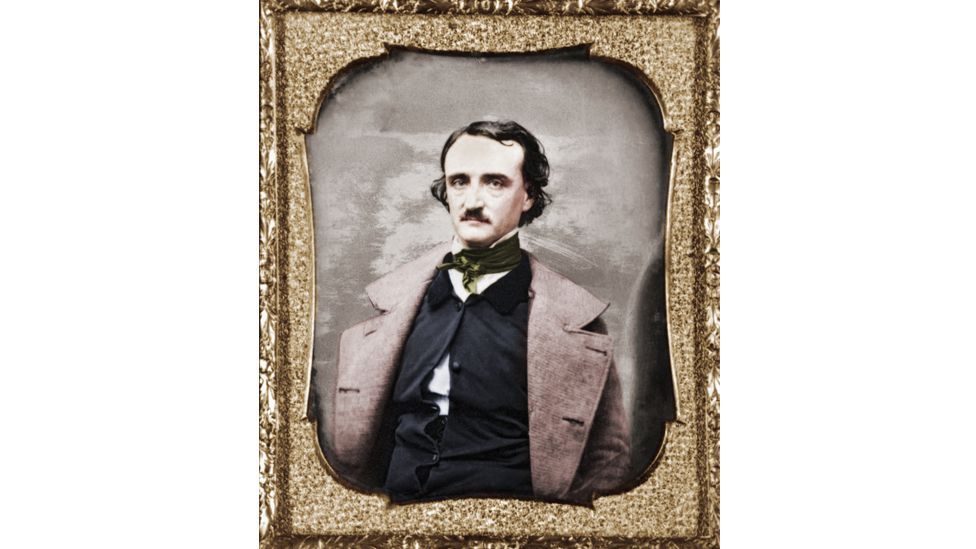
The US writer Edgar Allan Poe, pictured in 1848, was a master of the Gothic genre (Credit: Getty Images)
As Dr Sorcha Ní Fhlainn, Senior Lecturer in Film Studies at Manchester Metropolitan University and founding member of the Manchester Centre for Gothic Studies, explains: You see something in the shadows – that's more disturbing, in a way, than someone with an axe. There's a sense of the threat of the unknown, or the threat of the unquantifiable, and that's what's really unsettling and worrying. For her, Bram Stoker's Dracula (1897) is hard to beat as a quintessential Gothic text. It works really, really well because it has within it a central character who is rarely glimpsed but pops up at the margins. The novel holds so much – issues around national identity, around women and sexuality – but it's like a doughnut, there's a hole in the narrative, she says.
The Gothic is an intensely psychological form. In the hands of the likes of Edgar Allan Poe, its crumbling architectural features become props in an exploration of fear and other intense mental states. It was the psychological aspects of the gothic that appealed to the writer Sarah Hilary as a student. I never equated gothic with lace veils and old houses, or coffins and grave-robbers, she recalls. The books I studied were about the awful things human beings do to one another, and the terrible price we pay for vanity, or greed, or lust.
As a novelist, she's put its tropes to good use. Her forthcoming psychological thriller, a modern twist on Daphne du Maurier's Rebecca entitled Fragile (Pan Macmillan), begins with a description of a London house that rivals any remote monastery or dense forest for sheer creepiness. There's a spiral staircase, a scent of neglect, the stifled chill of a museum. It even seems to shiver as the novel's narrator steps inside. Yet all of this, like the ghost in Never Be Broken, the most recent instalment of her award-winning Marnie Rome crime series, is a manifestation of psychological forces.
The Goth scene has emerged as one of youth culture's most enduring tribes
As humans, we're hardwired to be curious, and there are never enough answers in the real world, especially at times like these. So we look into the dark corners, in the hope of surviving the scare but also in the hope of finding answers, Hilary says. Reading gothic fiction is, she suggests, a safe, and far more satisfying, form of doomscrolling. If we tend to think of it as a historical genre, it's worth remembering that many of gothic literature's foundational texts are every bit as preoccupied with the then present and bleeding-edge technology as with the past. Just look at Frankenstein, which features typewriters, recording devices, and of course the doctor's Electro-chemical Mechanisms of Animation. For novelist Amanda Craig, it was Gothic ingredients that enabled her to add gritty state-of-the-nation commentary to The Golden Rule (Little, Brown), a literary thriller whose breezy Cornish backdrop and stirring romance might otherwise seem purely escapist.
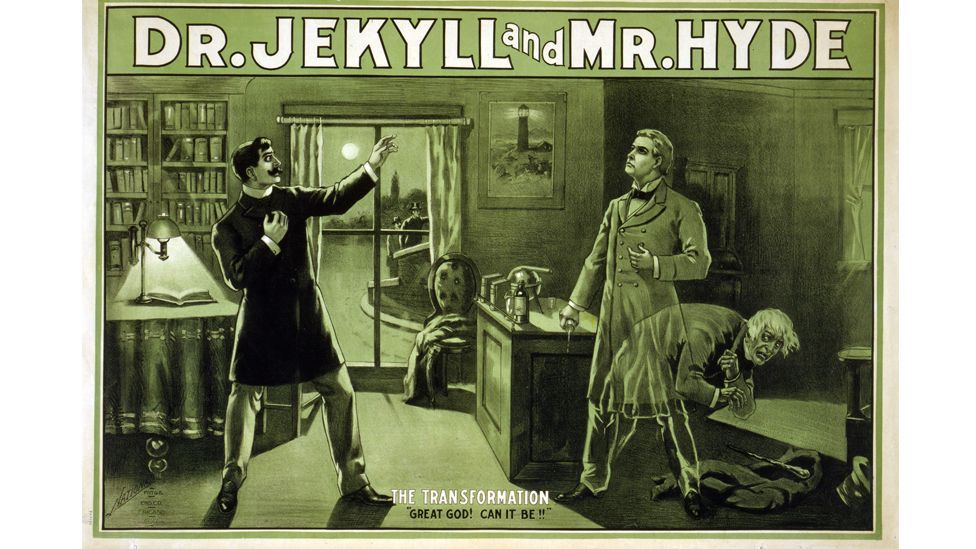
Unstable identity and transgressive behaviour are frequent themes in Gothic fiction (Credit: Alamy)
I think the Gothic is fundamentally about duality, Craig explains. If you think about many of those Gothic classics like Dracula or The Woman in White, you always have two people representing things in opposition to each other. That same duality allowed her to frame vital commentary on wealth and poverty; the haves and have-nots. Duality is also, she believes, why the genre has been enjoying such a revival. My theory is that it's a reflection of what's been going on in the world that we are living in, whether it's people moving to political extremes, or reason and unreason, truth and fake news. It just seems that we're bifurcating.
From the queer desire of Matthew Lewis's The Monk (1796) to the unnerving instability of identity in The Strange Case of Dr Jekyll and Mr Hyde (1886), Gothic literature has always excelled at being disruptive and transgressive, its anarchic properties leaving it well-placed to spotlight truths about our societies that other genres might turn away from. This 18th-Century invention thrived as much in the 20th Century as it did in the 19th, shaping modern classics by authors from Mervyn Peake to Shirley Jackson and, of course, Angela Carter.
In the decades since Carter declared her own times Gothic, the Goth scene has emerged as one of youth culture's most enduring tribes, filling cities and suburbs around the world with coal-eyed, jet-haired teens. Meanwhile, gothic literature has continued to evolve, tailoring its classic monster narratives to shape our 21st-Century imaginings of a posthuman future, for instance, or using tech to augment our reading experience. Teams supported by the CreativeXR acceleration programme, an Arts-Council-funded project that is currently developing ideas that combine Gothic storytelling, pop-up books and immersive technology.
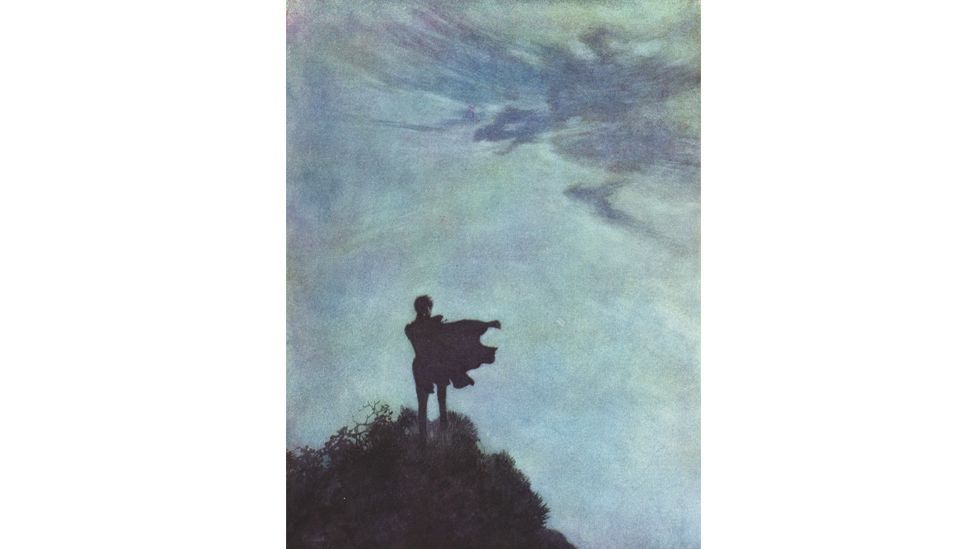
An illustration in a collection of poems by Poe depicts a demonic apparition in a storm cloud (Credit: Getty Images)
As the genre illustrates, the past has a way of foreshadowing the future. Today might feel like peak gothic, but it seems safe to say that we'll still be needing its shivery delights and pernicious unease, its comfort and its provocations, to help us navigate tomorrow.
Read more: https://www.frontlist.in/frontlist-amazon-wont-sell-books-framing-lgbtq-identities-as-mental-illnesses/
Article
Author
Authors
book news
Books
Culture
Frontlist
Frontlist Article
Frontlist Book
Frontlist Book News
Frontlist Books
Frontlist education News
Latest news
story



.jpg)






.jpg)

.jpg)
.jpg)

.jpg)
.jpg)
.jpg)










salamatikhabari.ir
Article writing is also a excitement, if you know then you can write otherwise it is complicated to write.
doctors jersey city
Incredible! This blog looks exactly like my old one! It's on a totally different subject but it has pretty much the same layout and design. Superb choice of colors!